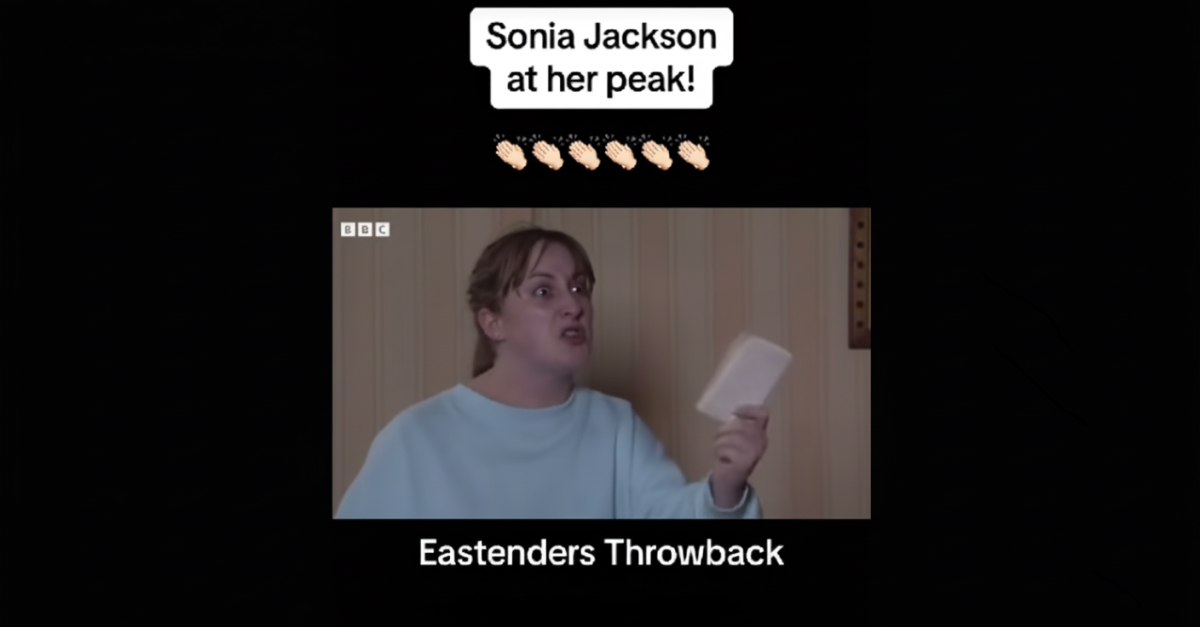I recently found myself in conversation with a group of younger girls (none of them over 25) talking, in surprising detail, about EastEnders. But not the current cast. They were talking about Barry, Sonia, Kat Slater — characters that peaked before these girls could even walk.
They hadn’t seen the episodes. They didn’t watch the show. But they knew these characters.
Why? Because social media kept them alive.
These characters live in memes. They live in out-of-context clips. They live in viral TikToks, parody accounts, reaction gifs. They live in culture, even if the show doesn’t.
This is what TV looks like in 2025; we’re all watching shows we’ve never seen.
It’s not just EastEnders, either. I know about entire Love Island plotlines without ever having watched a full episode. I can tell you who was snubbed, who gaslit who, who got dumped — all through TikTok edits, tweets, and meme posts.
The show is no longer just the content. The conversation is the content.
This is especially true for Gen Z and younger Millennials, where dual-screening is the norm. The TV might be on in the background, but the phone is where the emotion is happening. It’s where the reactions land. It’s where the commentary hits. And for many, it’s where the story begins.
Social is the new syndication.
TV shows used to live on in syndication — reruns, DVDs, niche cable channels. Now? They live on social media.
And it’s not just the hits. Social media has given a cultural second-wind to shows and characters that would’ve quietly disappeared in another era.
This is where it gets interesting for brands.
The ad break — once your only way ‘in’ — is now where people leave the TV. They grab their phones, scroll, react, refresh. That’s where the real estate is. That’s where the attention lives.
So the question becomes: How do you show up there in the moment the audience is most engaged?
For broadcasters, this opens up a huge opportunity to expand their creative universe.
Not just by clipping up trailers and posting stills. But by treating social as its own format of storytelling — one that’s reactive, native, and driven by the community.
The TV is no longer the whole show. It’s the starting point of a much bigger cultural moment, one that plays out across Instagram, TikTok, Reddit, Discord, and YouTube Shorts.
Brands need to show up in the conversation and not just the ad break.
Traditional TV sponsorships and ad slots still have their place. But brands that stop there are playing in a limited sandbox. The real opportunity lies in participating in the cultural conversation TV creates and doing so authentically.
This could look like:
- Reactive social content that taps into major plot twists or viral characters
- Creator collaborations that recap or parody the show in real-time
- Social-first brand storytelling that ties into the themes or tone of the show (without being overly literal or forced)
- Long-tail campaigns that keep the energy going between seasons
Social-first storytelling is the future of TV
The new model is clear: audiences want multi-touch narratives that span formats, platforms, and contexts.
The show is no longer a 30-minute or 60-minute block. It’s an ecosystem — where memes, interviews, cast reactions, live chats, and spoiler-free summaries all play a role in audience engagement.
This requires a fundamental shift in how broadcasters, production companies, and brand partners think:
Social strategy should be in the room during show development — not added after the fact
Community engagement should be resourced, staffed, and monitored like a newsroom. Partnerships with creators and meme accounts should be treated with the same seriousness as traditional media buys
And social success shouldn’t just be measured in impressions — but in cultural resonance.

